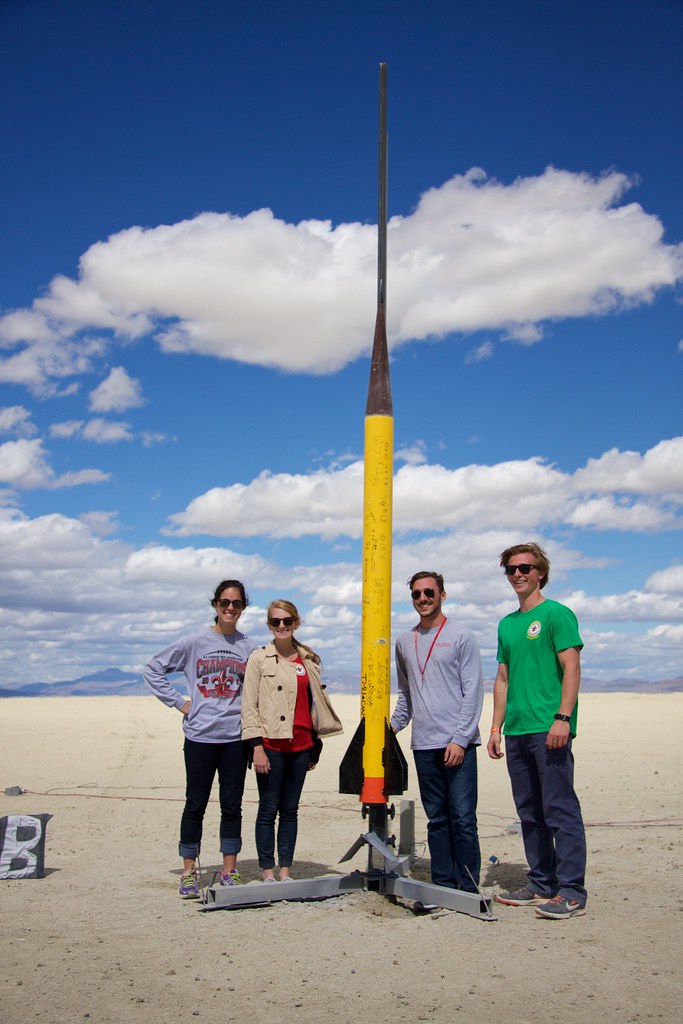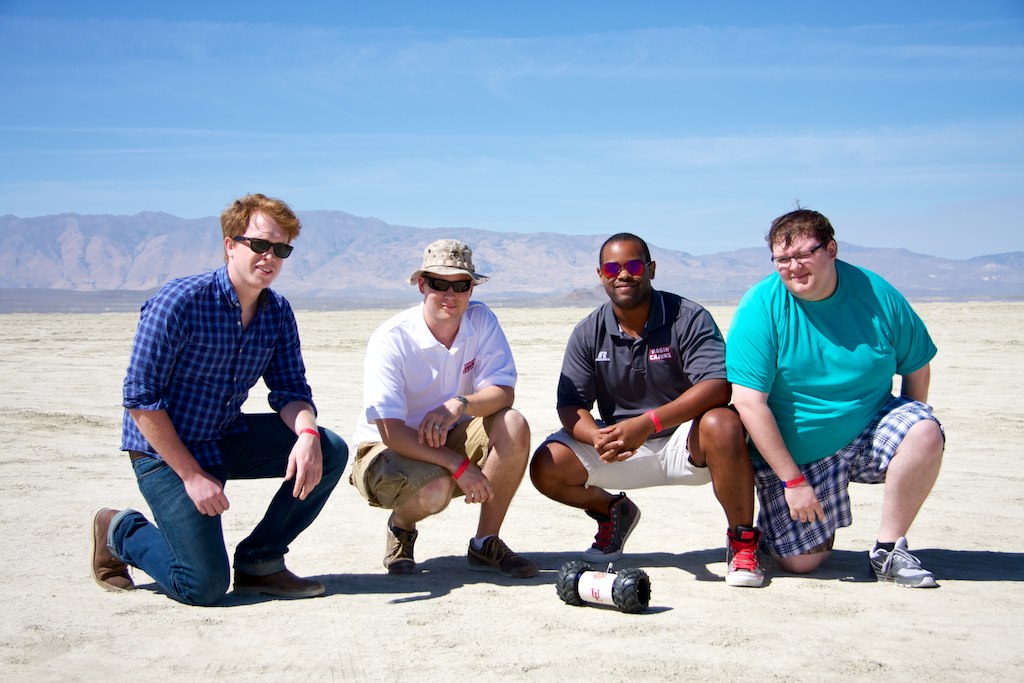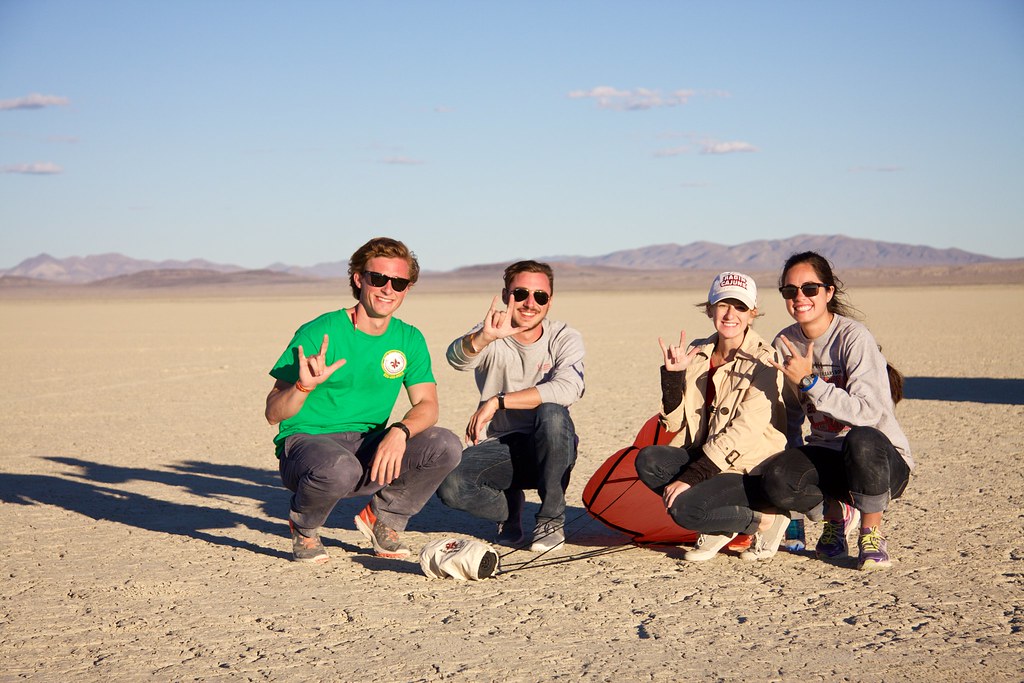
Figure 1: The 2015 ARLISS Team with an AEROPAC Rocket
For the past two years, the Department of Mechanical Engineering at the University of Louisiana at Lafayette has sent teams of students to the Black Rock Desert in Nevada to compete in A Rocket Launch for International Student Satellites (ARLISS). For ARLISS, the members of the AEROPAC rocket club provide rockets like that shown in Figure 1 to launch the student satellites. The student projects are not actually launched into space, but rather to approximately 12,000 feet. ARLISS is an international event, where Japanese participants far outnumber American.
The UL Lafayette Teams have competed in the Open Class competition in each year. Open class devices must fit inside a cylinder of approximately six inches in diameter and ten inches in length and must have a mass less than 1050 grams. After being launched and ejected from the rocket at about 12,000 feet, the devices must autonomously navigate to a predetermined target location, simulating landing a spacecraft on other planets. In order to win the contest, the device must stop within 100 meters of the target and be closer than other competitors. There is also a banquet, during which each team presents their design and results to all other teams.
The 2014 team, the first-ever from UL Lafayette to attend the contest and shown with their device in Figure 2, was funded by the Louisiana Space Consortium (LaSPACE). They competed in ARLISS as part of their senior design project. The contest is held in September each year, so the team had chance to revise their design as part of their senior design process, a unique opportunity for most senior design projects. Some pictures from the 2014 contest can be found at https://flic.kr/s/aHsk2LRZYC.

Figure 2: The First-ever UL Lafayette ARLISS Team
In 2015, another senior design team completed the initial design during the spring semester. Then, a team of students in the C.R.A.W.LAB refined the design and completed construction and testing leading up to the contest. The 2015 team is shown after their rover had landed, but before it deployed in Figure 3. More pictures from the 2015 contest can be seen at https://flic.kr/s/aHsk6Xt1hc.

Figure 3: The 2015 UL Lafayette ARLISS Team
The 2015 team launched twice and never reached the target. However, there was not a single team among the 25+ present that did; this is a difficult project. The 2015 rover design can be seen during testing following the second launch in the video below. If you wanted to see some more video, including the drive through the desert to the launch site and chase video following the launch, you can check out the UL Lafayette ARLISS vimeo channel.
We're currently in the design and fundraising phase for the 2016 contest. If you are interested in participating or sponsoring the team, please let me know.